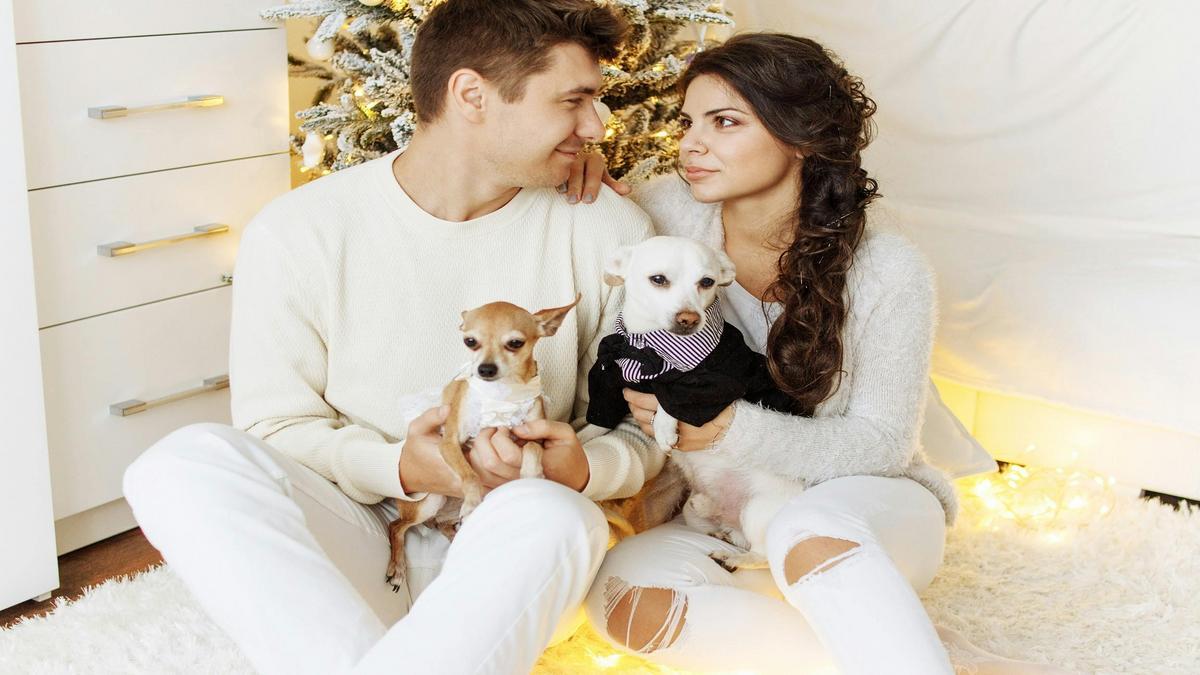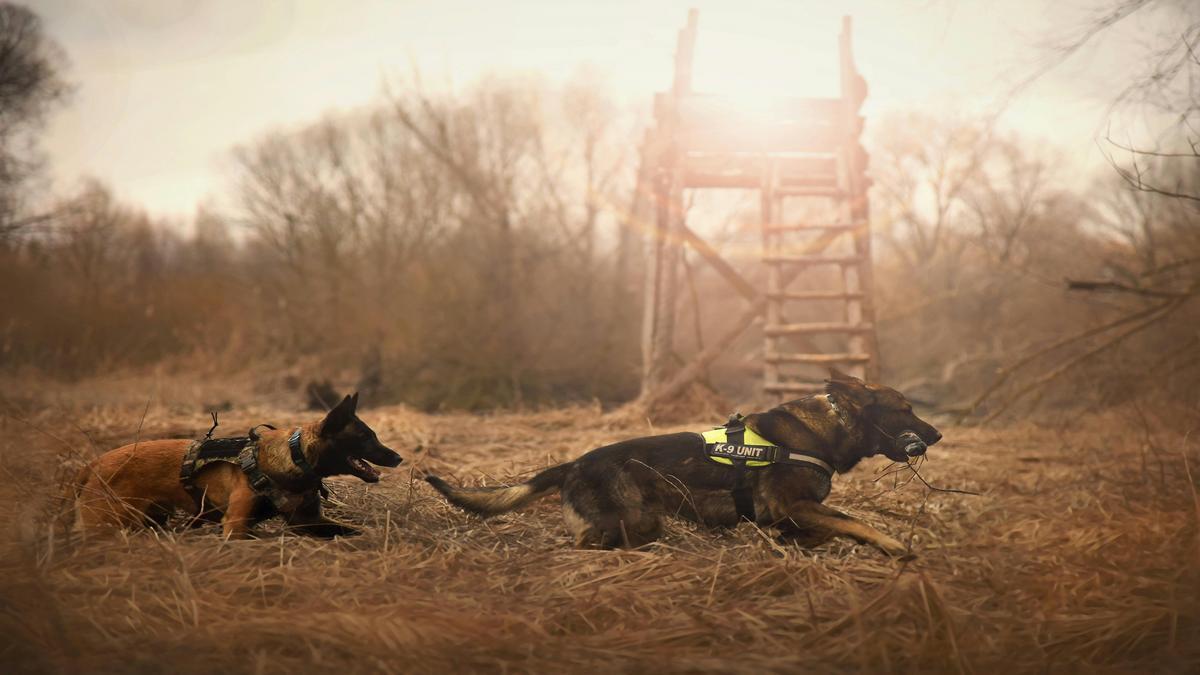Are you ready to dive into the fascinating world of sniffing butts? Dogs use this unique behavior as a way to gather information, establish social status, and communicate their intentions. Understanding the science behind why dogs sniff each other’s behinds can provide valuable insights into their behavior and enhance the bond between you and your furry friend. Let’s unravel the mysteries of sniffing butts together!
Main Points
- Canine behavior involves complex communication through scent.
- Sniffing butts is a natural way for dogs to gather information about each other.
- Dogs have special glands near their anus that release unique scents.
- Social hierarchy, stress levels, and reproductive status can be communicated through butt sniffing.
- Understanding this behavior can help you better comprehend and communicate with your furry friend.

The Science Behind Sniffing Butts
How Dogs Gather Information Through Smells
Dogs have a remarkable sense of smell, which allows them to gather a wealth of information through sniffing. When a dog sniffs another dog’s behind, they are not just being curious or playful; they are actually engaging in a form of communication. Through the scents they pick up, dogs can learn about the other dog’s gender, reproductive status, emotional state, and even what they had for breakfast! This seemingly odd behavior is a vital part of how dogs interact with each other and the world around them.
The Role of Olfactory Receptors in Canine Communication
At the core of a dog’s ability to decipher scents lies their olfactory receptors. Dogs have up to 300 million olfactory receptors in their noses, compared to a mere 5-6 million in humans. This vast difference in olfactory capabilities means that dogs perceive the world primarily through their sense of smell. When a dog sniffs another dog’s behind, they are essentially reading a detailed scent story that reveals a plethora of information.
Understanding the Importance of Scent in Canine Behavior
Scent plays a crucial role in how dogs navigate their surroundings and interact with other animals. When a dog sniffs another dog’s behind, they are not just being nosy; they are gathering essential information that helps them understand the social hierarchy, establish bonds, and communicate effectively. In the realm of canine behavior, scent is the primary mode of communication, and sniffing butts is a natural and instinctual way for dogs to gather information.
Dogs rely on their sense of smell to interpret the world around them, and sniffing butts is an integral part of how they gather information. By understanding the science behind this behavior, you can gain valuable insights into your canine companion’s social interactions and communication methods.
Social Dynamics of Canine Butt Sniffing
Establishing Social Hierarchy Through Scent
When dogs engage in the peculiar behavior of butt sniffing, they are actually gathering crucial information about each other. This behavior is a fundamental aspect of their social dynamics, helping them establish a social hierarchy within their pack. By sniffing each other’s behinds, dogs can learn about the other dog’s gender, health status, emotional state, and even what they had for lunch. It’s like a social media profile in the form of scent!
How Dogs Use Butt Sniffing to Communicate Dominance
In the canine world, dominance is a significant factor in their social structure. When a dog sniffs another dog’s rear end, they are not just being nosy; they are actually communicating dominance. The dog doing the sniffing is often asserting their position in the pack hierarchy. It’s like saying, “I’m the boss around here, and I need to know everything about you.”
Interpreting Canine Social Interactions
Understanding dog behavior can be like deciphering a secret code. Here are some key points to keep in mind when observing dogs engaging in butt sniffing:
- Duration: The longer the sniff, the more intense the interaction.
- Body Language: Pay attention to the posture of the dogs involved. Stiffness or tension can indicate discomfort or aggression.
- Response: How does the sniffed dog react? Submission or reciprocal sniffing can indicate respect or equal standing.
Sniffing Butts: Gathering Information, Social Status, or Intention
When your canine companion engages in butt sniffing with another dog, it’s like they are exchanging business cards in the dog world. They are gathering information, establishing social status, and communicating their intentions all in one unique interaction. So, the next time your dog dives in for a sniff, remember that they are just doing their version of a social handshake.

Butt Sniffing: Normal Behavior or Cause for Concern?
When to Worry About Excessive Butt Sniffing
If your dog is constantly sniffing other dogs’ butts, it might be a sign that something is amiss. Here are some instances when you should pay attention to your dog’s behavior:
- Persistent butt sniffing that interferes with normal activities.
- Aggressive behavior accompanied by excessive sniffing.
- Avoidance of other dogs or social interactions.
- Physical symptoms such as redness or irritation in the anal area.
Understanding the Difference Between Playful and Aggressive Butt Sniffing
It’s essential to differentiate between playful and aggressive butt sniffing to ensure a safe interaction for all involved. Here are some tips to help you decipher your dog’s intentions:
| Playful Butt Sniffing | Aggressive Butt Sniffing |
|---|---|
| Brief and curious | Prolonged and intense |
| Accompanied by play bows | Stiff body language |
| Mutual and reciprocal | One-sided and dominant |
Tips for Monitoring Your Dog’s Behavior
To keep a close eye on your dog’s behavior and ensure harmonious interactions, follow these tips:
- Observe your dog’s body language when interacting with other dogs.
- Intervene if you notice any signs of aggression or discomfort.
- Provide positive reinforcement for appropriate social behavior.
- Consult a professional trainer or behaviorist if you have concerns.
Sniffing Butts: Gathering Information, Social Status, or Intention
Dogs have a fascinating way of communicating with each other, and butt sniffing is a vital part of their social interaction. It’s like reading a book for them, gathering information about each other’s social status, intentions, and emotional state. Understanding this behavior can deepen your bond with your canine companion.
Butt sniffing is not just a quirky habit; it serves a specific purpose in the dog world. By sniffing each other’s rear ends, dogs can unveil a wealth of information that helps them navigate complex social dynamics. It’s their way of shaking hands, exchanging business cards, and establishing rapport in the canine realm.
Picture this: dogs at a park, greeting each other with enthusiastic wags of their tails and eager sniffs of their butts. It may seem odd to us humans, but for dogs, it’s like having a conversation. Each sniff reveals details about the other dog’s diet, health, emotional state, and even reproductive status. It’s a form of intimate communication that transcends language barriers.
Navigating the subtleties of butt sniffing can be intricate, but with patience and observation, you can decode your dog’s intentions with precision. Remember, dogs speak a different language than we do, and sniffing butts is their way of engaging with the world around them.
As a responsible pet owner, it’s your duty to monitor your dog’s behavior closely and intervene if necessary. Creating a safe and positive environment for social interactions is crucial for your dog’s well-being and happiness.
How to Decode Your Dog’s Intentions Through Butt Sniffing
Reading Body Language During Butt Sniffing Interactions
When your furry friend engages in butt sniffing, it’s essential to pay close attention to their body language. Here are some key signals to look out for:
- Tail Wagging: A loose and relaxed tail wag indicates friendliness and curiosity.
- Ears: Forward-facing ears suggest interest and engagement.
- Body Posture: A relaxed and open body posture signifies comfort and ease.
- Eye Contact: Soft eye contact demonstrates a positive interaction.
Interpreting the Length and Intensity of Butt Sniffing
The duration and intensity of butt sniffing can also provide insights into your dog’s intentions:
- Brief Sniff: A quick sniff typically indicates a casual greeting.
- Prolonged Sniff: A lengthy sniff may signify a deeper interest or investigation.
- Repeated Sniffs: Multiple sniffs could indicate a strong desire to gather information.
Building a Stronger Bond Through Understanding
By interpreting your dog’s behavior during butt sniffing interactions, you can strengthen your bond and communication with them. Understanding their intentions allows you to respond appropriately and foster a positive relationship.
| Body Language | Interpretation |
|---|---|
| Tail Wagging | Friendliness and Curiosity |
| Ears | Interest and Engagement |
| Body Posture | Comfort and Ease |
| Eye Contact | Positive Interaction |
By navigating the subtleties of butt sniffing, you can navigate the complexities of your dog’s communication and emotional expressions. Paying attention to these details allows you to deepen your understanding of your canine companion and strengthen your emotional connection.
Frequently asked questions
Why do dogs sniff each other’s butts?
Dogs sniff each other’s butts as a way of gathering information about one another. They can learn about the other dog’s gender, health, diet, and even emotional state.
Is butt sniffing a form of social status for dogs?
Yes, butt sniffing is a way for dogs to establish social status. By sniffing another dog’s butt, they can determine who is dominant and submissive in a social hierarchy.
Do dogs have specific intentions when they sniff each other’s butts?
Yes, dogs often have specific intentions when they sniff each other’s butts. They may be trying to communicate their own social status, show submission, or simply gather information about the other dog.
Can dogs get aggressive if their butt is sniffed by another dog?
In some cases, dogs may become aggressive if they feel threatened or uncomfortable when their butt is being sniffed by another dog. It’s important for dog owners to monitor their pet’s body language and intervene if necessary.
How can I help my dog be more comfortable with butt sniffing?
To help your dog be more comfortable with butt sniffing, it’s important to socialize them from a young age and expose them to different dogs and situations. Positive reinforcement training can also be used to create a positive association with butt sniffing.

